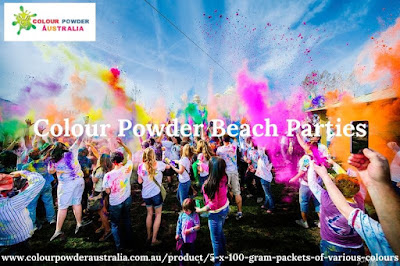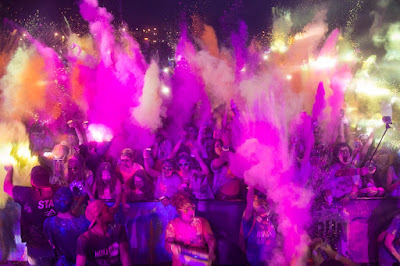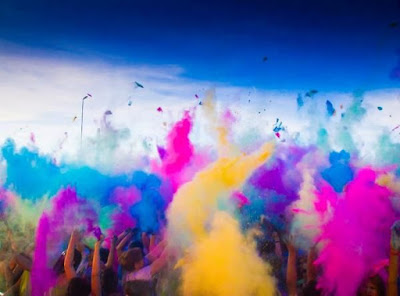Holi is also known as the festival of colors is unquestionably the most fun-filled and energetic of all the Hindu festivals. It is celebrated with unadulterated joy, mirth, fun, play, music and dance, and, with loads of bright Colour Powder Beach Parties which mark the occasion of Holi. Every year after the full moon in early March, Holi is celebrated to mark a season of good harvest and to signify the fertility of the land. This is a time for spring harvest. The abundance of newly harvested crops at home and stores gives rise to a boisterous mood and huge merriment on Holi day. This festival is also known as Vasant Mahotsava.
 |
| Colour Powder Beach Parties |
The main day of Holi is enjoyed by squirting colored water on everyone, dunking friends in colored water pool amidst teasing and laughter, and reveling with companions. Nothing is considered offensive on Holi day as it is a day of merriment and not fight. Colors play a vital role in Holi. Everybody dresses up in their white best so that it can be turned colorful by the end of the day.
The Colour Powder for Color Run is called 'gulal', and was made at home previously, from the flowers of the 'tesu' or 'palash' tree, also called 'the flame of the forest'. The powder extracted from these dried flowers when mixed with water makes a beautiful saffron-red dye. This pigment and also 'aabir', made from natural colored talc, are extensively used as Holi colors. Unlike the chemical colors of today, these natural colors were good for the skin. Now, most people are adopting safe and alternative organic colors and going back to the old days to avoid chemicals.
 |
| Colour Powder For Color Run |
In tune with the mood of Holi Gulal Hindu Festival a new series of gifting options to be gifted with love on Holi day is to be seen in the market. These gifting options include beautiful floral arrangements, delicious sweets, reusable gift hampers, non-toxic natural color pouches, etc. Each gifting option is accompanied mostly with two packets of colorful gulal, one pichkari, and some balloons. The message of safe Holi is sent by making all these gulal packets organic and non-toxic and having an exclusive gift hamper for non-toxic natural color packets.
 |
| Holi Gulal Hindu Festival |
Gift hampers of Gujjias, Namkeens, and Dry fruits provide a safe and healthy option to celebrate Holi with style and panache. Kid's Holi hamper has the latest pichkari in the style of a gun which will make the kids have more riotous fun on Holi day.








